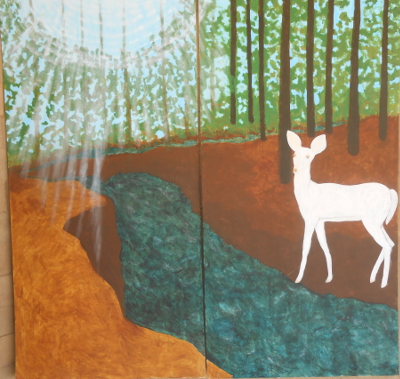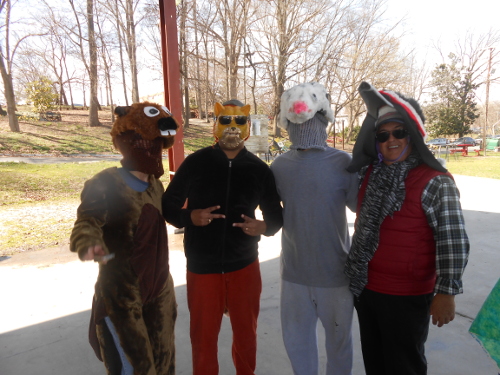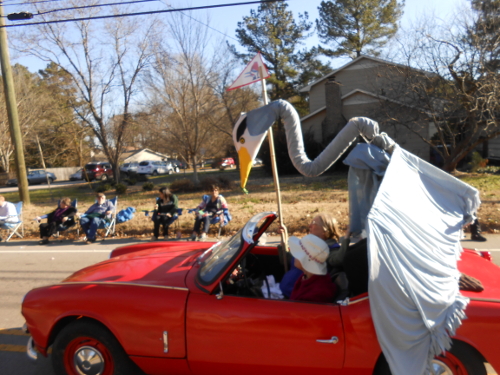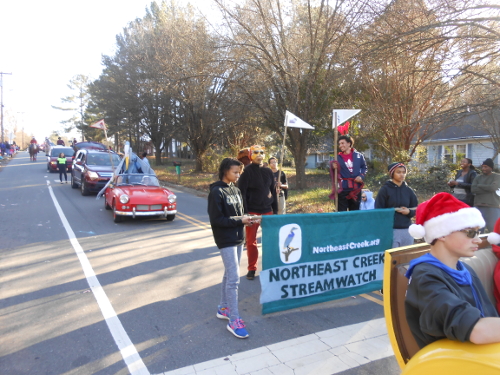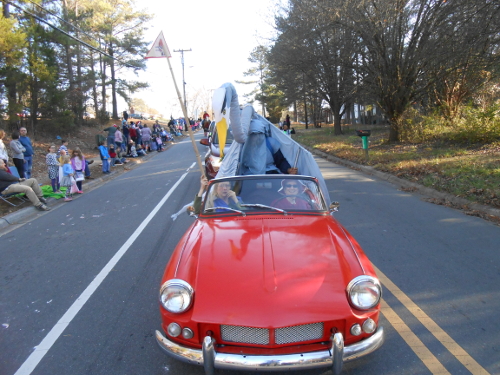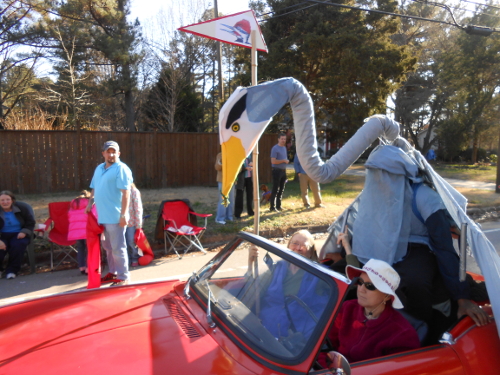This is based on an article I wrote for the July issue of the Parkwood Inside/Out. There were some website issues, so I haven’t posted in a few months. Hibiscus are probably still blooming; they were still in bloom in the Coker Arboretum last week, but it is getting late in the season for them, so now is the time to go to your local pond.
Parkwood Lake Hibiscus
Hibiscus or mallows are the showiest natives growing along the margins of Parkwood Lake and local beaver ponds in midsummer. The most common species is a small bush with soft, dark green leaves and huge white 5-petalled flowers with dark red or purplish centers, each flower lasting one day. I think this is Hibiscus moscheutos, or H. palustris, but they seem to be considered the same species now. The other Hibiscus is a rare species with bright red flowers, probably H. coccineus, native to Georgia, Florida, and Alabama, but apparently introduced in North Carolina relatively recently, since it doesn’t appear in the comprehensive Manual of the Vascular Flora of the Carolinas written in the 60’s. There were some small Hibiscus at the Clermont end of the Lake before it was deepened last year, and I thought they were killed, despite the ribbons I tied on them, but there are still a few small Hibiscus there. They aren’t flowering, possibly because they get too much shade, or they were cut back, or maybe they sprouted recently. Elsewhere in Parkwood there are rose-of-Sharon (H. syriacus), a tree-sized Old World Hibiscus. Hibiscus are in the mallow family (Malvaceae) with marsh mallows (Althea officinalis, a European plant found in North Carolina whose roots were used to make the first marshmallows), okra, hollyhocks, and cotton.
I’m not completely sure what the white Hibiscus are. Both H. moscheutos and H. palustris have been called swamp rose mallows, and the former has also been called wild cotton (but don’t look for a cotton boll), breast root, and crimson-eyed rose-mallow. Both can have pink flowers, but H. moscheutos is usually white and I only see white flowers around here. The name would make more sense if the rose in rose-mallow just means rose-like. The Greek word for mallow is hibiscus and moscheutos refers to the smell of musk roses, another relative. These plants are perennials, but their tough stalks seem to regrow from the base each year. I usually see hibiscus growing around 2 to 4 feet tall, but they can reach 8 feet. They have oval to three pointed, red maple-like leaves alternating along the stalks. The leaves don’t look particularly fuzzy, but they still have a soft texture. The large flower buds are surrounded by an array of needlelike, but soft green bracts and larger sepals that extend after flowering to protect the developing fruit. The petals have a soft, pleated appearance and the male and female parts are united to form a structure like a radio tower jutting from the center, like other Hibiscuses. The flower gives way to a dry capsule that opens in the fall or winter, releasing many seeds. Hibiscus don’t produce fibers, but the fruit resembles an unopened cotton boll. These mallows like to grow in marshes and beside ponds in full sun, but yards with moist soil and those around Parkwood Lake should be able to grow them.
H. coccineus is called rose, scarlet, or brilliant mallow, and scarlet mallow comes closest to describing the color. Supposedly it is also called Texas star, but it shouldn’t grow there naturally. This species can grow up to 10 feet tall and has palmate, or hand-like, leaves with three to five points. There must be some red Hibiscus in yards around the Lake, and they self-seeded into the marshy ground along Clermont, or someone planted them there, because I’ve never seen them naturalized elsewhere. These plants seem more lofty and airy than the white Hibiscus and very tall examples can be seen waving over the flowerbeds along the central brick path at UNC’s Coker Arboretum.
Hibiscus are supposed to attract butterflies and ruby-throated hummingbirds, but I mainly see bees visit them. I also don’t see many insects eating the leaves, but Japanese beetles and the spiny caterpillars of Io moths, one of the smaller giant silk moths, can eat Hibiscus, and common checkered-skippers, painted ladies, and gray hairstreak butterfly caterpillars, eat plants in the mallow family and this might include Hibiscus. Cooks can use Hibiscus leaves as a thickener like okra and as cooked greens. Hibiscus, especially H. moscheutos, leaves and roots are mucilaginous and were used herbally to soothe and soften tissue and H. moscheutos was used against breast cancer.
If you look for Hibiscus at the Lake, you will probably notice the color of the water. At the start of July the Lake was opaque yellow with silt eroded from the Meadows at Southpoint construction site at the corner of 54 and Barbee Road, the headwaters of the stream feeding the Lake. Durham Stormwater Services investigated and said there weren’t any big problems with the erosion controls and the contractor was very cooperative. This is how the Lake fills with muck, but soil also bleeds from yards with every rain and much of Parkwood drains into the Lake, so when people pile leaves and logs in the streams, this is also usually where they are heading. I’m not sure how much of a problem the recent runoff is for aquatic life, but excessive siltiness is harmful for some organisms. Further downstream a beaver pond bordered by Hibiscus, roses, dogbane, spotted jewelweed, and beds of brilliant green knotweed is still the color of tea, naturally dyed by decaying vegetation. Northeast Creek turned brown with the recent storms, hopefully not only because of the massive grading at sites just north of RTP. The poor water quality tolerant carp are jumping in the Creek, and they are the subject of my article in the latest issue of Chatham County Line (www.chathamcountyline.org).

